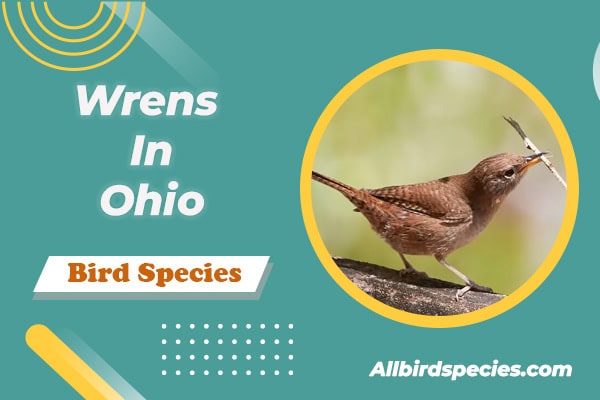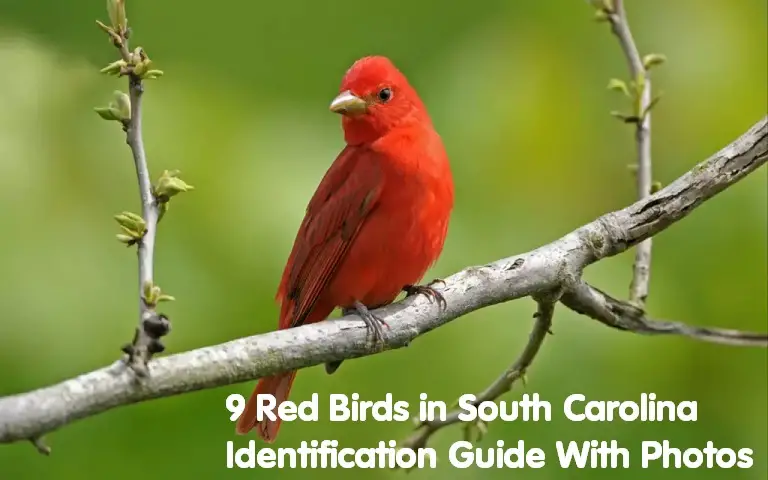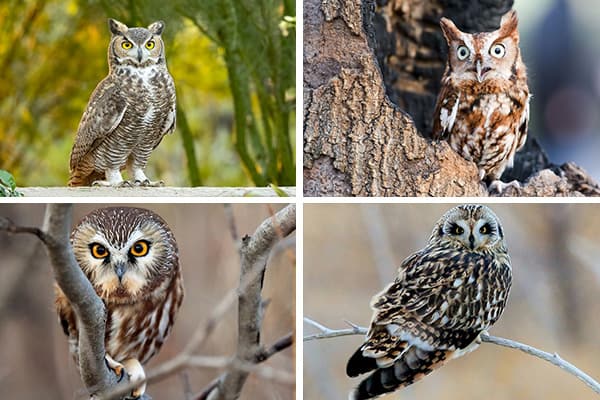7 Wrens In Ohio and Where To Find Them (With Pictures)
Wrens In Ohio, home to the renowned “Biggest Week in American Birding”, enthusiasts flock to witness the spectacular migratory warblers, earning the state its title as the “Warbler Capital of the World”. However, Ohio’s avian diversity extends far beyond warblers, with approximately 450 bird species documented. Its varied habitats, from mountains to lakes, provide a haven for diverse birdlife. Among these are seven species of wrens, inconspicuous yet intriguing songbirds found across the state. Ohio boasts numerous protected areas and birding hotspots, including Magee Marsh Wildlife Area and Killdeer Plains Wildlife Area.
Here we’ll learn about 7 different types of Wrens in Ohio!!
1. Carolina Wren
- Scientific name – Thryothorus ludovicianus
- Lifespan – 7 years (maximum recorded)
- Size – (12 to 14 cm)
- Weight – (18 to 22 g)
- Wingspan – (28 to 29 cm)
- Status – Least concern
The Carolina Wren is a small, chubby bird with a long tail. Also, It has reddish-brown feathers on its back, and its belly is a light brown color. You’ll notice a white patch on its throat and a white line over its eye. It also has a dark bill and dark stripes on its wings and tail. This bird makes different sounds, but the most common ones sound like “teakettle-teakettle” or “germany-germany.”

Nesting
Carolina Wrens make their nests in holes in trees, stumps, or under overhanging branches. Sometimes, they might build their nests among thick plants on the ground. In cities and suburbs, they might even use things like mailboxes or flowerpots for their nests. Their nests are usually shaped like a dome or a cup, with an entrance on the side.
Food
Wrens of Ohio mostly eat spiders and insects like crickets, caterpillars, cockroaches, grasshoppers, beetles, and moths. Occasionally, they might have snakes, frogs, lizards, or even snack on fruits and seeds.
Where To Find Them
Ohio Wrens live in dense, green places like cypress swamps, wooded areas, thickets, and overgrown farmland. You can find them in urban and suburban areas too, especially where there are lots of trees and plants. They’re pretty much everywhere in the state all year round and are quite common.
2. Winter Wren
- Scientific name – Troglodytes hiemalis
- Lifespan – 6 years (maximum recorded)
- Size – (8 to 12 cm)
- Weight – (8 to 12 g)
- Wingspan – (12 to 16 cm)
- Status – Least concern
The Winter Wren is a little, chubby bird with a short tail. Its feathers are mostly brown, with stripes on its tail, wings, and belly. The underside is lighter than the top, and its bill is dark and thin. It has tan-colored spots on its head, above its eye, on its throat, and belly. This bird sings a bubbly song that lasts about five to ten seconds.

Nesting
Winter Wrens make their nests in round, dome-shaped structures or in holes. They often build nests under creek banks, in tree roots, decaying logs, or in dead trees near streams. Also, These nests are made from plant stuff like bark, moss, twigs, grass, and roots. They line the nests with feathers and animal hair for extra coziness.
Food
The Winter Wren eats insects like ants, beetles, flies, caterpillars, and mites. It also munches on spiders, millipedes, and berries.
Where To Find Them
Winter Wrens live in both deciduous forests and evergreen forests with fir, spruce, and hemlock trees. They also hang out in backyards, fields with lots of bushes, and thick vegetation. These birds usually move around during migration.
Wrens In Ohio, you can see them throughout the year, but they’re most common in winter. They’re found in various places across the state, like Cleveland Lakefront Nature Preserve, Killdeer Plains Wildlife Area, Metzger Marsh Wildlife Area, Sheldon Marsh State Nature Preserve, and Headlands Beach State Park.
3. Marsh Wren
- Scientific name – Cistothorus palustris
- Lifespan – Unknown
- Size – (10 to 14 cm)
- Weight – (9 to 14 g)
- Wingspan – (14 to 17.8 cm)
- Status – Least concern
The Marsh Wren is a small, chubby bird with a short tail and a thin bill. Its feathers are rusty-brown on top, with black-and-white streaks on its back. The tail and wings have dark bars on them. Its belly and throat are whitish, and it has a pale eyebrow with unstreaked shoulders. This wren makes buzzing trill and gurgling sounds.

Nesting
Marsh Wrens make their nests in cattails and bulrushes. The nest is shaped like a dome and is built with grass, sedge, and cattail strands. It has a hole on top and a cup at the bottom, lined with feathers, sedges, grass, cattail down, or rootlets.
The female usually lays three to ten eggs at a time. These eggs are brown with dark spots. It takes about 12 to 16 days for the eggs to hatch, and then the baby birds stay in the nest for 13 to 15 days before they’re ready to leave.
Food
The marsh Wren eats insects like damselflies, mosquitoes, and spiders.
Where To Find Them
Marsh Wrens live in salt marshes with cordgrass and wetlands filled with sedges, cattails, bulrushes, and Phragmites. During winter, you can find them in thickets near wetlands, agricultural canals, and tidal salt marshes. While they mostly migrate, some Marsh Wrens stay put in certain areas all year round.
4. House Wren
- Scientific name – Troglodytes aedon
- Lifespan – 9 years (maximum recorded)
- Size – (11 to 13 cm)
- Weight – (10 to 12 g)
- Wingspan – (15 to 16.5 cm)
- Status – Least concern
The House Wren is a petite bird with a long, curved beak and a short tail. Its top side is brown with stripes on its wings and tail. The throat is whitish, and its underside is finely striped and light-colored. Also, It has a faint eyebrow stripe. This bird makes different sounds, including a mixed-up, bubbly song full of churrs and scolds.
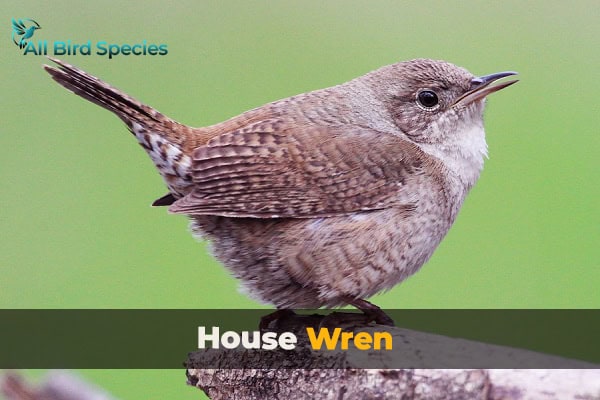
Nesting
House Wrens like to nest in natural cracks, old holes made by woodpeckers, or even in nest boxes. They build their nest by stacking sticks and twigs inside the hole to make a cup shape. Then, they line it with grass, snakeskin, feathers, animal hair, string, spider egg sacs, or even bits of plastic.
The female usually lays three to ten eggs at a time. These eggs are whitish to greyish with reddish-brown spots or speckles. It takes about 9 to 16 days for the eggs to hatch. After that, the baby birds stay in the nest for 15 to 17 days before they’re ready to fly away.
Food
House Wrens mostly eat insects and spiders. They munch on flies, springtails, beetles, earwigs, caterpillars, leafhoppers, and daddy longlegs. Sometimes, they’ll even snack on snail shells.
Where To Find Them
House Wrens live in a variety of places, from deciduous forests to southern swamps, western conifer forests, and aspen groves. You can also find them in urban and suburban areas, like backyards, buildings, farms, and developed neighborhoods.
5. Sedge Wren
- Scientific name – Cistothorus stellaris
- Lifespan – 5 years (average)
- Size – (10 to 12 cm)
- Weight – (7 to 10 g)
- Wingspan – (12 to 14 cm)
- Status – Least concern
The Sedge Wren is a small, round wren with a short tail and a curved bill. Its upper parts are brown and have lots of streaks, while its wings and tail are banded. The underparts are whitish with a peachy belly and sides. Its crown is streaked, and it has a light brown eyebrow. This wren sings with high-pitched notes and trills.

Nesting
The Sedge Wren builds its nests in spherical shapes with a side hole, either on the ground or in thick vegetation, especially sedges. Also, They make the nest using strips of sedges and grasses, lining it with fur, feathers, and more grasses. The female typically lays three to eight white eggs in one go, which she sits on for about 13 to 16 days until they hatch. After hatching, the babies stay in the nest for 12 to 14 days before they’re ready to fly out and explore.
Food
Sedge Wrens mostly eat insects and spiders like weevils, ants, locusts, beetles, grasshoppers, crickets, and caterpillars. They also eat some seeds as part of their diet.
Where To Find Them
Sedge Wrens in Ohio live in thick, tall sedges and grasses found in various places like hayfields, pond edges, meadows, old fields, marshes, tall grass prairies, and bogs with shrubs. They migrate from place to place.
In Ohio, you’ll mostly spot them during the summer, but they’re most common in spring and fall when they’re passing through. You can find them at places like Cleveland Lakefront Nature Preserve, Oak Openings Preserve Metropark, Killdeer Plains Wildlife Area, Metzger Marsh Wildlife Area, and Fernald Preserve.
6. Rock Wren
- Scientific name – Salpinctes obsoletus
- Lifespan – Unknown
- Size – (12.5 to 15 cm)
- Weight – (15 to 18 g)
- Wingspan – (22 to 24 cm)
- Status – Least concern
The Rock Wren is a medium-sized wren with a long, thin bill and a long tail. Its upper parts are light brown, while its underparts are whitish with light streaks and a buffy tint on the belly. The back, tail, and wings have speckles. It has a pale eyebrow stripe on its face. When it sings, it produces a series of phrases with lots of variation, sounding like “keree-keree-keree,” “chair-chair-chair-chair,” “deedle-deedle-deedle-deedle,” “tur-tur-tur-tur,” “keree-keree-keree,”and “trrrrrrr.”
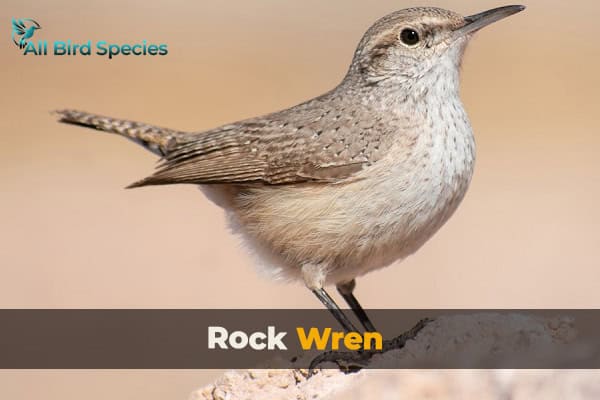
Nesting
The Rock Wren nests in cavities between rocks or within rocks on the ground. Their cup-shaped nests are made of bark, grass, moss, and hair, and lined with spider silk, hair, wool, or rootlets. They usually use small stones or sticks as a foundation. The female lays four to eight white eggs with reddish-brown spots. Incubation takes about 14 to 16 days, and the babies stay in the nest for another 14 to 16 days before they’re ready to leave.
Food
Rock Wrens primarily hunt insects like leafhoppers, grasshoppers, ants, beetles, and crickets. They also eat some plant material, seeds, and spiders.
Where To Find Them
Rock Wrens of Ohio prefer dry, rocky areas with little vegetation, ranging from low deserts to mountain peaks. They’re often found in habitats like shrubsteppe with rocky outcrops, cliffs, sagebrush, talus slopes, and canyon walls, as well as steep valleys and ravines. You can also spot them in alpine meadows, desert plateaus, and dry riverbeds.
During migration, they might show up in grasslands and agricultural lands, particularly in quarries, rock piles, debris, and abandoned mines. In some cases, they’re considered accidental visitors to certain areas. People have seen them at places like Edgewater Park, Oak Openings Preserve Metropark, near Mount Hope, and recently near Cambridge.
7. Bewick’s Wren
- Scientific name – Thryomanes bewickii
- Lifespan – 8 years (maximum recorded)
- Size – 5 in (13 cm)
- Weight – (8 to 12 g)
- Wingspan – 7 in (18 cm)
- Status – Least concern
The Bewick’s Wren is a medium-sized wren with a long tail and a sharp, downward-curving beak. It’s slender and mostly brown on the top with a heavily barred tail. You can’t miss its prominent white eyebrow. Underneath, it’s pale grey with a whitish throat. When it sings, it’s a mix of notes, warbles, buzzes, and phrases, often ending in a trill. What’s interesting is that the songs vary depending on where they are geographically, and each bird has its own unique tunes.
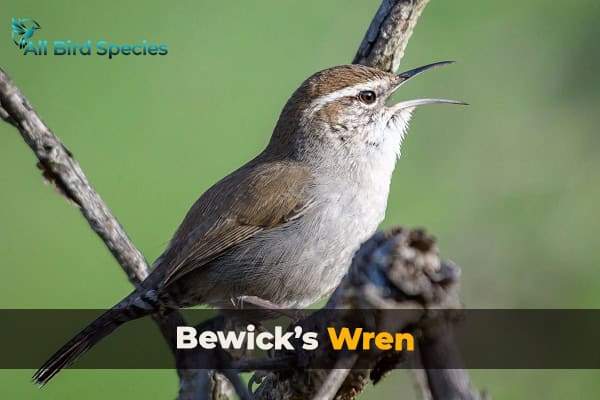
Nesting
Bewick’s Wrens like to nest in cavities, on ledges, in nest boxes, brush piles, and even abandoned buildings. Their nests are cup-shaped and made from grasses, rootlets, sticks, moss, leaves, and other plant stuff. Inside, they line it with soft materials like wool, feathers, hair, and sometimes even snakeskin. The female usually lays between three and eight white eggs with purplish or reddish-brown spots. It takes about 14 to 16 days for the eggs to hatch, and then the baby birds hang out in the nest for another 14 to 16 days before they’re ready to fly away.
Check Our Previous Articles:
Food
Bewick’s Wrens mostly eat small invertebrates like insect larvae, pupae, eggs, and adult insects. Also, They often hunt wasps, bees, moths, butterflies, grasshoppers, beetles, crickets, spiders, and flies. Sometimes, they’ll also munch on fruits and seeds from plants.
Where to Find Them
Bewick’s Wrens prefer habitats with chaparral, scrub, and thickets, found in various open areas, brushy spots, woodlands, oak forests, evergreen forests, desert shrublands, cactus stands, mesquite, willows, hedgerows, gardens, parks, cities, and suburbs.
While most of them stick around all year, some may travel short distances during migration. In the state, Bewick’s Wrens in Ohio are extremely rare and are now considered accidental visitors. The last sighting within state borders was in 1995. They used to be spotted around Columbus, Findlay, Toledo, Cleveland, and Jackson.
Frequently Asked Questions
Q1. What kind of wrens live in Ohio?
Bewick’s Wren and Carolina Wren are commonly found in Ohio.
Q2. What are wrens famous for?
Wrens are famous for their powerful songs and beautiful melodies.
Q3. Why are wrens special?
Wrens are special because they are small yet energetic birds with delightful songs, and they play important roles in ecosystems by controlling insect populations.
Q4. What kind of bird is a wren?
Wrens are small, songbird species known for their distinctive songs and lively behavior.

